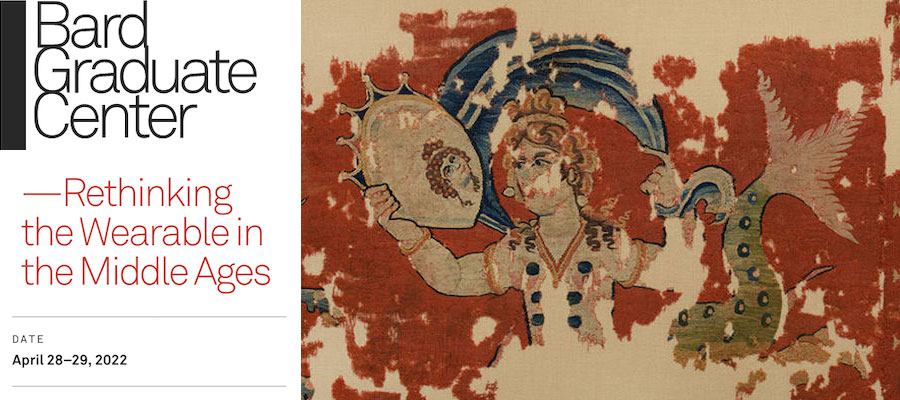Rethinking the Wearable in the Middle Ages, Bard Graduate Center and Zoom, April 28–29, 2022
Covering, protecting, and adorning the body count among the most fundamental of human concerns, at once conveying aspects of an individual’s persona while also situating a person within a given social context. Wearable adornment encompasses materials fashioned by human hands (like fabric, metalwork, or even animal bones) and modifications to the body itself (such as tattoos, cosmetics, or hairstyles), which beautify the body while simultaneously conveying social, political, and protective functions and meanings. The wearable is thus the most representational and at the same time most intimate product of material culture.
This conference seeks to expand our current understanding of the wearable in the Middle Ages. Current scholarship on the topic in Byzantine, western medieval, Eurasian art, as well as Islamic traditions tends to encompass clothing and jewelry, and is frequently medium-specific, with minimal regard to the interrelatedness of different aspects of appearance. On the one hand, work on medieval textiles has tended to approach questions of identity, consumption, and appearance by comparing textual sources and visual depictions with surviving textiles. The study of medieval jewelry, on the other hand, largely focuses on the classification and attribution of precious metal pieces from excavations and museum collections, as scholars make sense of pieces long removed from the bodies they once adorned. Tattoos, prosthetics, cosmetics and headgear are almost entirely absent in our understandings of medieval dress practices. This separation was not always so, however, and indeed nineteenth-century art historians such as Gottfried Semper integrated all aspects of bodily adornment in their considerations of the nature of ornamentation and surface decoration.
This conference will reimagine the wearable in similarly holistic terms. Bringing together varied forms and different media to help scholars better understand how the surfaces of medieval bodies not only presented social values and norms, but also operated within a designated spatial environment.
Advance registration required. Space for in-person audience is limited.
